Text
Source #5
This source was from the Wall Street Journal based in New York. The article was written by Janis Byron and is titled: Music Therapy: A Healing Art. The article talks about Byron’s first-hand experience working with music therapists and seeing their effect on Parkinson’s Disease, as well as what he has researched on the topic.
Byron starts with providing a background of how music therapy came to be in the world of medicine. He mentions how in the Middle Ages, the study of music became a mandatory part of a physician's education. Music therapy began to develop as a profession during World War I, and in World War II music was incorporated into the Army's Reconditioning Program under direct supervision of medical personnel. This was the first official recognition of music as a therapeutic aid by the military. Today there are over 5,000 certified music therapists in the U.S., and more than 70 colleges offer music-therapy programs treating everything from PTSD to Parkinson's disease and Alzheimer's.
Bryon also references Oliver sacks and his book Musicophilia that was the first source that I looked at when researching this project.
One of the first-hand experience that Byron had was when he was invited by the Americans for the Arts to visit the Walter Reed National Military Medical Center and participate in "Stages of Healing." The program helps patients learn how to play a musical instrument and facilitates live performances. The aim is to enhance the healing process and enrich the lives of patients, visitors and staff and help relieve the stress often associated with a hospital setting.
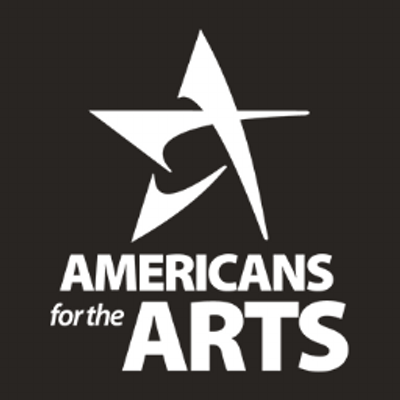
Byron played for the veterans two Chopin waltzes and "A Hero's Passing By", which he had written for a TV documentary on his wife's father. he said that throughout his performance and afterwards, he could notice the difference in the patients of the hospital and that their functioning was more intact. Afterwards, Byron and his wife talked with some of the young veterans suffering from a range of physical and psychological conditions; many of which told him how much music had helped their recovery.
Another program at the Walter Reed Medical center is called Musicorps, where patients learn, play, compose and record music. They work with professional musicians, computer-based music workstations and actual instruments. It is designed to help patients suffering from PTSD and traumatic brain injury.
"Learning, creating, and performing music involves so many aspects of brain function that it is believed to recruit uninjured parts of the brain to compensate for parts that have been injured, and help those parts that are injured recover," notes the hospital in its literature on the program.
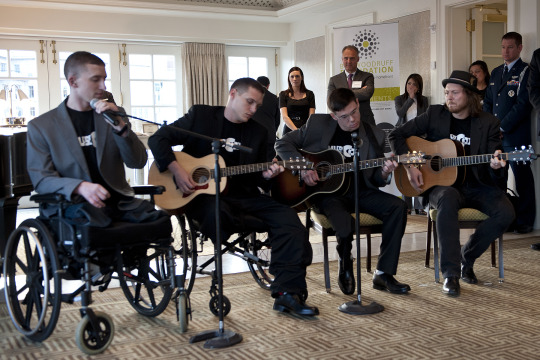
Byron later learned about Music for All Seasons, which hosts performances in New York, New Jersey, Pennsylvania, Connecticut and California. The founders have the belief that live music has "a therapeutic, educational and healing influence on all who listen and participate." The program is now in its 22nd season.
The newest initiative, Voices of Valor, brings groups of 6 to 10 veterans together with two musician facilitators to write their lyrics to a group song, set it to music and record it in a professional studio.
This shorter article was fun to read and it was interesting to get a perspective of the work of music therapy in healing our nations veterans from an actual musician. It was also nice to get more background on how music therapy came to be and to see how far it went back in history. This article focused more on veterans and how music has helped them in rehabilitating or calming their symptoms.
Source:
http://search.proquest.com/docview/1521903568?rfr_id=info%3Axri%2Fsid%3Aprimo
https://twitter.com/americans4arts
https://commons.wikimedia.org/wiki/File:Musicians_with_MusiCorps_perform_during_the_annual_Bob_Woodruff_Foundation_event_in_Washington,_D.C.,_April_3,_2013_130403-A-TT930-005.jpg
0 notes
Text
Source #4
For my next source I decide to research what other diseases can be treated with music therapy. I decided to focus on Alzheimer’s Disease an how music therapy can help and/or relieve the symptoms of AD. I was drawn to an article from The Lancet Neurology by Jules Morgan titled: “Hooked on Music: therapy for Alzheimer's disease?”
The article first discussed how music is universal and everyone can relate to it. Morgan talks about how students find it easier to memorize song lyrics than their French verbs and how arranging words or phrases to a rhythm or a tune helps memorability. She then goes on to mention that music can transport us to our past, a place, or event, stimulating a memory or a feeling.
Morgan then jumps into her main point on how The Alzheimer’s Foundation of America found that music can be of therapeutic value for people with Alzheimer’s disease. This is true when patients are even in the very late stages, because music can be felt without the need for high-functioning cognitive processes.
“Music can shift mood, manage stress-induced agitation, stimulate positive interactions, facilitate cognitive function, and coordinate motor movements.”
Music can also comfort and distract people who might be frustrated by their inability to process environmental stimuli; just play a tune, and they could find themselves swaying or toe-tapping instead - a connection beyond words and understanding. A game was made where all that is played is a tune, and patients could find themselves swaying or toe tapping. Broadly reminiscent of a game show or trivia quiz, the game tests memory by playing a different sample of the same song. The player can select a playlist (by decade) or challenge themselves to a time trial. If the music is recognized, the game then asks the player to silence the song for 4 seconds and, when it returns, the player decides whether the tune has resumed at the correct point. The player must sing or hum the tune to fill in the missing seconds. When the music restarts, the player has to determine whether they were in sync or not.
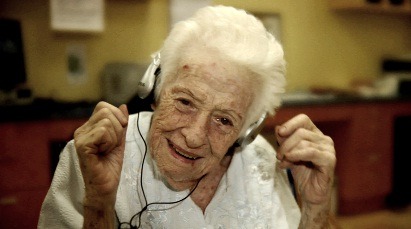
If your guess is successful you gain points, encouraging competition and sharing of the challenge with friends on social media sites. The more people play, the more data is gathered. The game is certainly not complex, and despite it seeming to offer four different activities, each one is a modified variation of the same task. It is more of a repetitive cycle of tracks used to ask how well you know your songs? When a song has been played numerous times, the entertainment value started to wane, and the desire for an ending becomes stronger than the desire to play on.
What this project hopes to discover of whether you can recognize the hook, or lack of, a catchy tune is well within your capabilities. This project uses public engagement in popular and accessible platforms, adding in scientific discovery, as well as encouraging a widespread interest in responding to a critical threat of the devastation caused by dementia.
For me, this article was very interesting. I got to research other ways that music therapy is helping patients with cognitive issues and diseases. Alzheimer’s is also close to me because my other grandmother passed away just this last December after living with Alzheimer’s for years. It was great to hear how they are creating games for patients with AD and making the games fun and interactive. It is a great way into easing memories out of patients in ways that a unprecedented. No medicine can do that.
Source:
http://ac.els-cdn.com/S1474442214701450/1-s2.0-S1474442214701450-main.pdf?_tid=e8bdd450-2643-11e7-b340-00000aab0f26&acdnat=1492746056_528c71f9545e9bea02bc541667ef78bc
https://impact.nku.edu/project/1179
0 notes
Text
Source #3
For this source, I decided to look into other ways that the arts help Parkinson’s Disease patients. This source discussed the effects of Tango (the dance) on the mobility and functioning of a Parkinson’s patient. In this study, 2 groups of Parkinson’s patients were studied; one group took Tango lessons while the other took exercise lessons. These exercise lessons were designed especially for students with Parkinson’s Disease.
In the Tango lessons, PD patients worked on postural stretches, balance exercises, tango-style walking, footwork patterns, and experimentation with timing of steps to music,both with and without a partner. The sessions were structured such that each dancer could learn from his/her partner and from the rest of the group. Participants danced both the leading and following roles. Dancing to Argentine tango commercial recordings,they rotated partners approximately every 10 to 15 minutes. Students were encouraged to take breaks as necessary and to ask questions or offer comments about their dance experience at the end of the class.
During the exercise class, the patients began with breathing and stretching exercises, then moved onto resistance and dexterity exercises, sometimes using water bottles or yardsticks to provide resistance or leverage. Students were encouraged to challenge themselves maximally, in terms of range of motion and strength limits. During the last 10 minutes of class, students performed core strengthening and stretching exercises using floor mats.
Both groups showed significant improvements in overall Unified Parkinson’s Disease Rating Scale. This scale determines the level of severity of a patient’s Parkinson’s based on behavior and mood, activities of daily living, and motor examination including speech and tremors. In addition, the tango group showed significant improvements on the Berg Balance Scale which tests the balance of senior citizens. The exercise group did not improve on this. Finally, the tango group showed a trend toward improvement on the Timed Up and Go test that was not seen in the exercise group. The Timed Up and Go test looks at how quickly a senior citizen is able to do something such as walk, stand or turn on command.
With these results, it can be seen that tango is feasible for individuals with Parkinson’s Disease and may be an effective form of group exercise for individuals with PD; more so than exercise classes. The tango group demonstrated significant improvement while the exercise group did not. Tango incorporates several aspects of movement that may be especially relevant for individuals with PD. While dancing tango, participants are engaged with multitasking that requires dynamic balance and involves turning, initiation of movement, and moving at a variety of speeds. The individuals who participated in the tango group were told to move their torsos and legs while guided by the beat of the tango music. The timing of the steps was synchronized with their partners’ steps and the beat. This use of auditory cues to facilitate movement is known to be beneficial for individuals with PD. Auditory cues can increase walking speed. Training with auditory cues can also reduce severity of freezing.
Listening to the beat of music and having to also do a task that is difficult for patients with Parkinson’s is extremely beneficial. They are working many areas that they need improvement on and Tango has shown that it is working.
Learning about how music therapy is meshed with dance therapy to help Parkinson’s patients was very interesting. It all made sense and the added factor of hitting two birds with one stone (balance and movement) is very time efficient. It was interesting to learn that the tango classes showed much more improvement than the exercise group. The use of music must have directly affected these results. Next, I hope to search for more first-hand experiences and not journals and studies.
Sources:
http://www.tangozone.net/Hackneyarticle1.pdf
http://journals.lww.com/jnpt/Abstract/2007/12000/Effects_of_Tango_on_Functional_Mobility_in.3.aspx
0 notes
Text
Source #2
In this source from the Journal of Music Therapy, researchers from the University of Kansas studied the effects of a music therapy on the speech (being able to understand their speech and their vocal acoustics) as well as the moods of Parkinson’s patients. Statistically significant increases were found in speech intelligibility as well as vocal intensity, as rated by the patient’s caregivers.
One of the biggest symptoms of Parkinson’s Disease is impaired speech. Most patients’ voices get very quiet, barely a whisper, so their loved ones are unable to hear them. Not being able to voice their opinions, many patients withdraw from conversations and social activity. No pharmacy medication or traditional speech therapy has helped, to the thought of music vocal therapy was brought into the question.
Following the treatment, lasting 1 month, the researchers found "significant improvement in the duration of sustained vowel pronunciation, maximum fundamental frequency range, mean fundamental frequency, and fundamental frequency variability". Also found was an improved speech articulation.
Researchers also concluded that singing naturally intensifies different aspects of speech production. Singing naturally creates a louder voice than normal speech. Learning how to distribute the breath to sing a musical phrase can help patients develop ways to use their respiratory capacities. Practicing songs at desirable tempos also might improve abnormal speech rates, as well as exaggerating consonants while articulating song lyrics may help improve speech intelligibility.
Singing also require correct posture which is also beneficial for speech production of PD patients, who tend to have a stooped posture with bowed head and drooped shoulders. Good posture stabilizes the basic conditions of speech production, making speech in general less of a chore.
Singing involves facial muscle movements that are much larger than those in speech, so PD patients have to over work their face muscles. That way when they try to speak it won’t seem nearly as hard as singing. People with PD often show mask-like faces and the resulting reduction of lip movements, and lack of facial expressions interfere with effective communication. Singing may promote active facial movements which contribute to clear articulation as well as nonverbal communication.
The results of the moods of the patients showed that toning and singing groups indicated less depression than did the control group.
This Journal entry has been very beneficial in my research because it gave me a detailed overview of various studies conducted in hopes of learning more about the connection between music therapy and Parkinson’s Disease. It also showed me a different approach to using music therapy on Parkinson’s patient. In my first source, music was used to benefit a patient’s physical movements, but this source gave me insight into the use of vocal exercises and singing to help a patient’s vocal abilities.
Source:
https://oup.silverchair-cdn.com/oup/backfile/Content_public/Journal/jmt/38/4/10.1093/jmt/38.4.273/3/38-4-273.pdf?Expires=1492392738&Signature=dOnq1CmYb5iwDHsZ3rGS4RDHjS~KHC99gu7uso-PsiNqeJzPwE1RylTP-8djXD2CYk4cT9j0km6G8MWCS-aFDB40niTC5Ugopv-Z-u08PoAm1dBC-GDRF8EaC6zfHnMtht2nI8k8hdCeUVPlArl~limN7WTuPW17im5~5Zvmxrmhqn8wqiFigWjmJs~smaZaEGDl1u013WepFRUG78l9xHlx6-rh2KoNzUt6zKgv60pSKMLVC-7TRWY3wknkH9k6o~xJVi14swtzfWPAP7OqbJh9yGfpT-BxswH6XWTvTNOjMZ3YjiKdb7BAGVps~x0EJ-~hIC2DUthsxv5pkj3ndA__&Key-Pair-Id=APKAIUCZBIA4LVPAVW3Q
0 notes
Text
Source #1
In Oliver Sacks’ book Musicophilia, Sacks writes a chapter on how Music Therapy was used way back in the 1960s to improve the motor skills and gait of patients with Parkinson’s Disease.
Gait in Parkinson’ patients is the change in fluid movement in arms and legs. Some of the most common Gait symptoms in PD patients are:
Lack of heel strike—foot lands either flat or forefoot lands first
Inability to extend the knee and flex the ankle in terminal stance
Reduced or absent arm swing
Reduced speed and amplitude
This is referred to in Sacks’ book as a kinetic stutter. When we walk, our steps move to a rhythm, which is automatic, but in Parkinson’s, this flow is gone and patients are unable to fall into a rhythm.
In this chapter, Sacks discusses his time working at Beth Abraham Hospital in the Bronx. There, there were many strangely immobile, entranced-looking patients, sometimes in strange postures, absolutely motionless, frozen in a trance like state. This was in 1966, where there was no medication of any use on these patients for their immobility. But, all the nurses and staff knew that these patients could move on occasion, with an ease and grace that came to them when listening or playing music. Most PD patients can not initiate any form of movement, but many could catch and return a ball if it was thrown, and all of them responded in some way to music.
“Some of them could not initiate a single step but could be drawn into dancing and could dance fluidly. Some could scarcely utter a syllable; their voices, when they could speak, lacked tone, lacked force, were almost spectral. But these patients were able to sing on occasion, loudly and clearly, with full vocal force and a normal range of expressiveness and tone.”
Other patients could walk and talk but only in a jerky, broken way, unable to keep a steady tempo. With these patients, music could modulate the stream of movement or speech, giving them steadiness and control.
Music Therapy was not a profession in the 1960s. The first formal music therapy program was set up in 1944 at Michigan State University, and the National Association for Music Therapy was formed in 1950. But music therapy remained, for the next quarter of a century, scarcely recognized.
While the power of music has been known for millennia, the idea of formal music therapy arose only during the First and Second World Wars, when large numbers of wounded soldiers were gathered in veterans hospitals, and it was found that their pain and misery and even, seemingly, some of their physiological responses could be improved by music. Doctors and nurses in many veterans hospitals started to invite musicians to come and play for their patients, and musicians were only too happy to bring music to the dreadful wards of the wounded.
Parkinson’s is often called a “movement disorder”, though when it is severe it is not only movement that is affected, but the flow of perception, thought, and feeling as well. The disorder of flow can take many forms; sometimes, as the term “kinetic stutter” implies, there is not a smooth flow of movement but brokenness, jerkiness, starts and stops instead. Parkinson’s stutter can respond well to the rhythm and flow of music. But it has to be the right kind of music—and the right kind is unique for every patient.
Sacks discusses how music has helped some of his Parkinson’s patient take more control of their bodies. One of his patients he said, “One minute I would see her compressed, clenched, and blocked, the next minute, if we played music for her, all of this would disappear, replaced by a blissful ease and flow of movement. She would smilingly “conduct” the music, or rise and dance to it. But it was necessary—for her—that the music be legato. Anything staccato, percussive music might have a bizarre countereffect, causing her to jump and jerk helplessly with the beat, like a marionette.”
“In general, the “right” music for PD patients is not only legato, but has a well-defined rhythm. If the rhythm is too loud, dominating, or intrusive, patients may find themselves helplessly driven by it. The power of music on PD is not, however, dependent on familiarity, or even enjoyment.”
Another one of Sacks’ patients, a former music teacher, said she needed music. She said that she had become “graceless” with PD. She had lost her former naturalness and musicality of movement. But when she found herself stuck or frozen, even the imagining of music might restore the power of action to her. As she put it, she could “dance out of the frame,” and move freely and gracefully.
“It was like suddenly remembering myself, my own living tune.”
Equally dramatic, was her ability to easily and automatically walk with another person, falling into their rhythm, their tempo, sharing their kinetic melody, but the moment they stopped, she would stop, too.
This power of music was invaluable with another patient, whose movements were too fast on the right side of his body and too slow on the left side. Only when he sat down and played the piano could he bring his two hands together in unison.
The movements and perceptions of people with PD are often too slow, though they may not be aware of this—they notice it only when they compare them-selves to clocks, or to other people. But if music is present, its tempo and speed take precedence over the PD and allow patients to return, while the music lasts, to their own rate of moving, that which was natural for them before their illness.
Reading this chapter was very interesting. I got some background on when Music Therapy started and how it was used in the early to mid 1900s. I also was able, through Sacks’ memories, get first-hand encounters of how PD patients acted with and without the stimulus of music. It was interesting to read about how music affects each patient differently. Where as one patient must have music playing at all times to continue their steady movements, others need only think of a song and they are able to walk as if they were never diagnosed with PD. I also found it very interesting that the type of music is very unique to each patient, but must be a legato tempo. Also interesting was the fact that PD patients can not initiate most movement, but can react quickly and on the spot if a stimulus, such as a ball thrown at them, is entered into the equation.
From here I would like to search for more information about how Music Therapy is used now for PD patients and search for some studies and their conclusions.
Source
Musicophilia by Oliver Sacks
http://www.art-13.ru/sites/default/files/musicophilia.pdf
0 notes
Photo
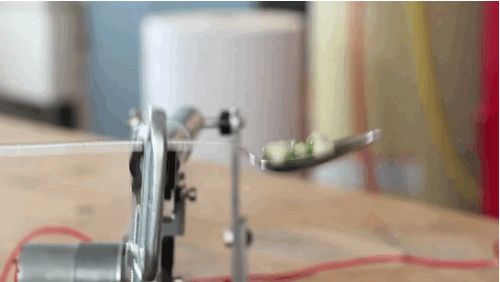

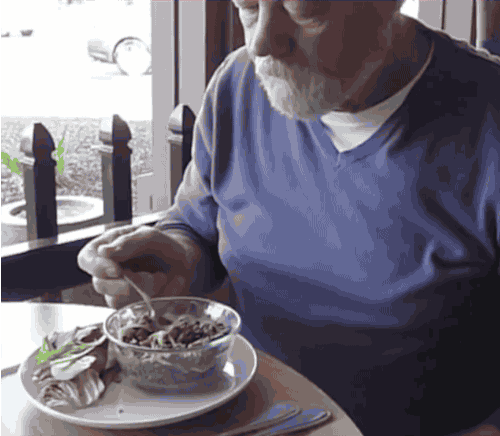

Neurological conditions like Parkinson’s disease and essential tremor, a benign trembling of the hands, head, voice, legs or trunk, are heavy burdens in their own right.
But add to that the moments when sufferers try to enjoy a meal with friends or family. The frustration attendant with being unable to keep food on the fork or spoon becomes another consequence of the disorder.
Now a San Francisco startup called Lift Labs is selling a piece of assistive technology that counters hand tremors and lets users have a meal without embarrassment or annoyance. The device, called Liftware, mounts utensils on an active stabilizing platform that diminishes uncontrollable jerking movements.
This month, Lift Labs is matching donations to its Indiegogo crowdfunding campaign to send Liftware to people in economic hardship. The company will send the devices to the International Essential Tremor Foundation for distribution to those in need. Click through to see the campaign video.
Keep reading
5K notes
·
View notes
Text
Dopamine: It Holds Us Together
Hello All! Welcome to my academic blog for my UWEC writing class research project. I have decided that my research project will be on how music therapy helps the brain function of Parkinson patients.
Parkinson's disease is a chronic movement disorder where symptoms continue and worsen over time. The cause is unknown, and there is currently no cure. Parkinson’s is the malfunction and death of vital nerve cells in the brain, called neurons. Some of these dying neurons produce dopamine, a chemical that sends messages to the part of the brain that controls movement and coordination. As the disease progresses, the amount of dopamine produced in the brain decreases, leaving a person unable to control movement normally.
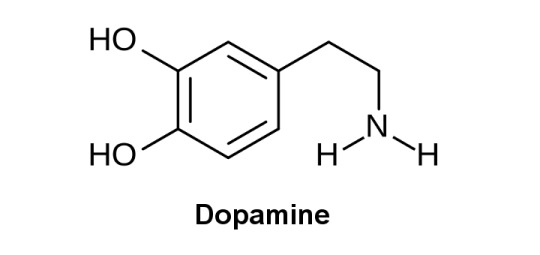
The most common motor signs of Parkinson’s disease include:
tremors in the hands, arms, legs, jaw and face
slowness of movement
rigidity or stiffness in the limbs
impaired balance and coordination

This research project combines something my love of music with my wish to know more about Parkinson’s Disease. My grandma passed away this last April after battling Parkinson’s for 22 years. My whole life I watched her body, mind and ability to take care of herself deteriorate before my eyes. I was never told very much about my grandma’s disease, but I also never ha the time to research it on my own. A few months ago I saw on Facebook studies with music being used to help Parkinson’s patients. Since then I have been wanting to research the study more in-depth. The main questions I hope to answer are:
How does music therapy help the cognitive function of the brain in Parkinson patients?
What is the history of research on Parkinson’s Disease and Music Therapy? What was the reasoning behind using music therapy? Is there still more research being gathered? What type of research was being conducted? What were the labs?
Is the use of music therapy for Parkinson’s common?
What are the different approaches of music therapy to Parkinson’s disease?
How does music therapy help the cognitive functions of others with diseases like Parkinson’s?
http://www.pdf.org/about_pd
Pictures
https://ccram.org/2017/03/08/the-shock-pharm-adrenergic-agonists-dopamine/
http://www.kin.hs.iastate.edu/parkinsons-therapy-group
0 notes